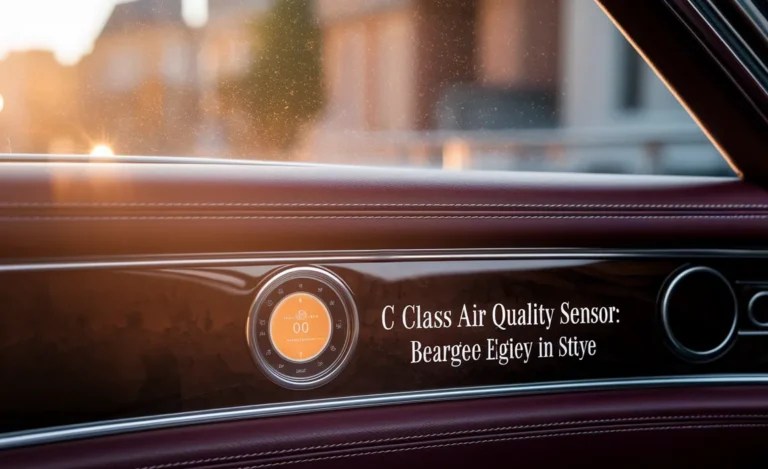C Class Adaptive Cruise: Effortless Driving Perfection
Unlock effortless driving with your C-Class Adaptive Cruise Control. This intelligent system automatically adjusts your speed to maintain a set distance from the car ahead, significantly reducing driving fatigue on highways and in traffic. Learn how to activate, adjust, and master this essential Mercedes-Benz technology for a smoother, safer, and more enjoyable journey.
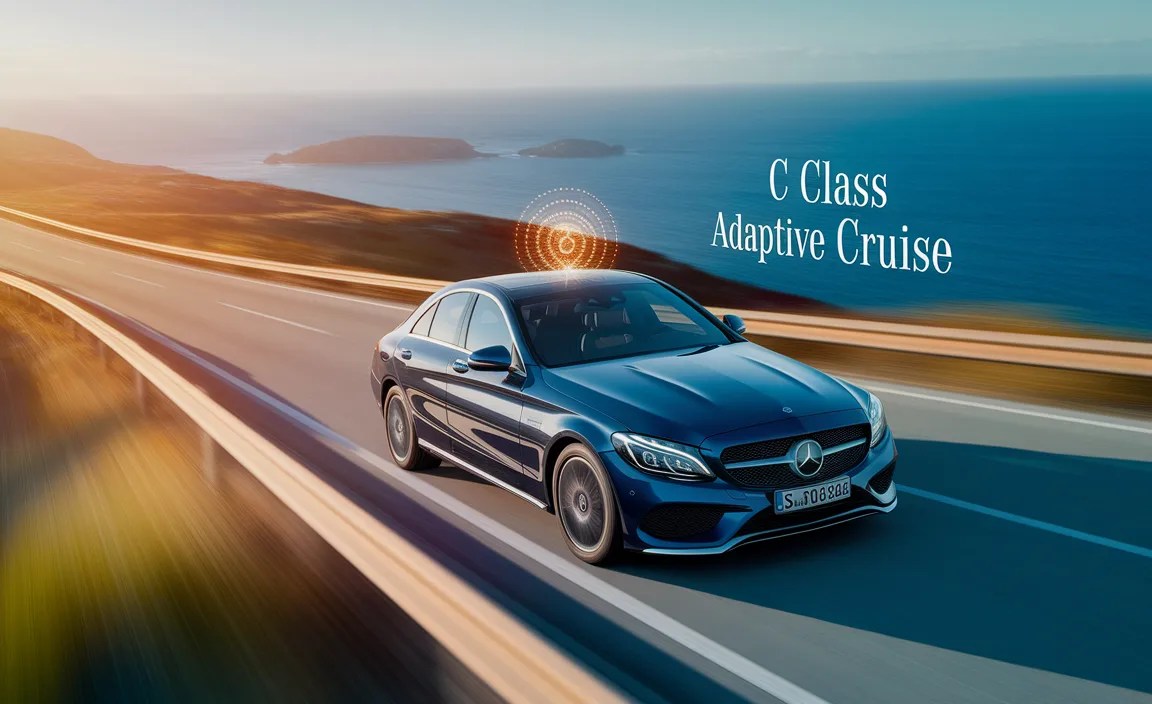
Driving your Mercedes-Benz C-Class should be an experience of refined ease. Sometimes, particularly on long journeys or when navigating busy traffic, the constant need to adjust your speed can detract from that luxury feel. That’s where Adaptive Cruise Control, often abbreviated as ACC, comes in. It’s not just about setting a speed; it’s about intelligent assistance that makes driving feel less like a chore and more like a seamless extension of your intentions. If you’ve ever found yourself wishing your car could “help” manage the pace, you’re in for a treat. We’re going to demystify Adaptive Cruise Control – what it is, how it works, and, most importantly, how to use it to achieve that effortless driving perfection you expect from your C-Class. Let’s dive in and make your drives smoother than ever.
Understanding Mercedes-Benz C Class Adaptive Cruise Control
At its core, your C-Class’s Adaptive Cruise Control (ACC) system is designed to enhance your driving comfort and safety. Unlike traditional cruise control that simply maintains a set speed, ACC adds a layer of intelligence by actively monitoring the traffic ahead. It uses a combination of sensors, typically radar and camera systems, to detect vehicles in your path. Based on your pre-set speed and the distance you’ve chosen to maintain, ACC will automatically accelerate, decelerate, or even brake to keep you at a safe interval. This technology is particularly beneficial in situations where traffic flow is variable, such as highway driving or moderate congestion, helping to reduce driver workload and the potential for sudden braking or acceleration.
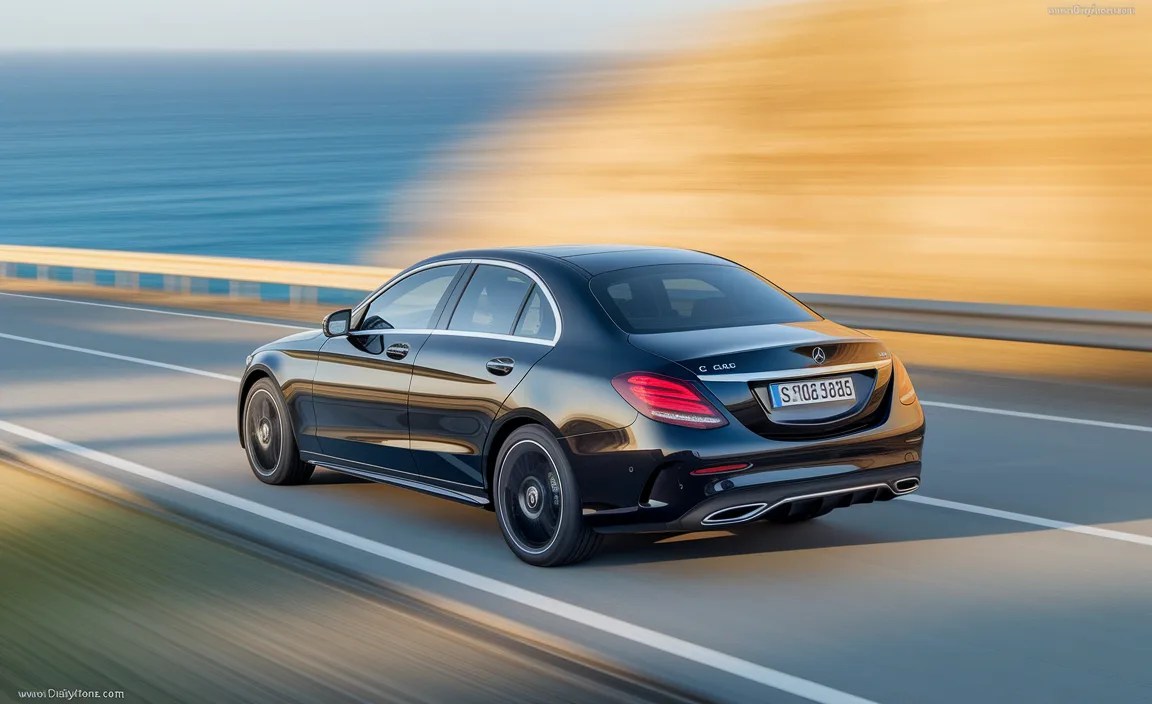
How Does C Class Adaptive Cruise Work?
The magic behind your C-Class ACC lies in its advanced sensor suite and sophisticated control unit. A radar sensor, usually integrated into the front grille or bumper, continuously scans the road ahead. Simultaneously, a camera, often located near the rearview mirror, helps identify vehicles and their positions.
Here’s a simplified breakdown of the process:
- Detection: Radar and camera sensors identify vehicles in front of your C-Class.
- Measurement: The system calculates the distance and relative speed of the detected vehicle.
- Comparison: This information is compared against your selected speed and following distance.
- Action: If the vehicle ahead slows down, ACC will reduce your speed by easing off the throttle or applying the brakes. If the vehicle speeds up or moves out of your lane, and the path ahead is clear, ACC will accelerate back up to your set speed.
This constant, intelligent adjustment aims to provide a smoother, more consistent driving experience, reducing the stress of repetitive speed management.
Key Features and Benefits
The benefits of using Adaptive Cruise Control in your C-Class are numerous and contribute significantly to a more relaxed and secure drive.
Primary Advantages:
- Reduced Driver Fatigue: Especially on long highway stretches, ACC significantly lessens the mental effort required to manage speed.
- Improved Fuel Efficiency: By maintaining a more consistent speed and minimizing unnecessary acceleration and deceleration, ACC can contribute to better fuel economy.
- Enhanced Safety: The system’s proactive monitoring helps maintain a safe following distance, potentially preventing rear-end collisions.
- Smoother Traffic Flow: ACC’s ability to react smoothly to traffic changes helps maintain a more consistent flow, benefiting both you and surrounding drivers.
- Intelligent Acceleration and Braking: The system doesn’t just react; it anticipates and adjusts in a refined manner befitting a Mercedes-Benz.
Distinguishing from Standard Cruise Control
It’s crucial to understand how ACC differs from traditional cruise control. Standard cruise control locks your vehicle at a specific speed, regardless of what’s happening in front. You, the driver, are solely responsible for accelerating or braking to match traffic.
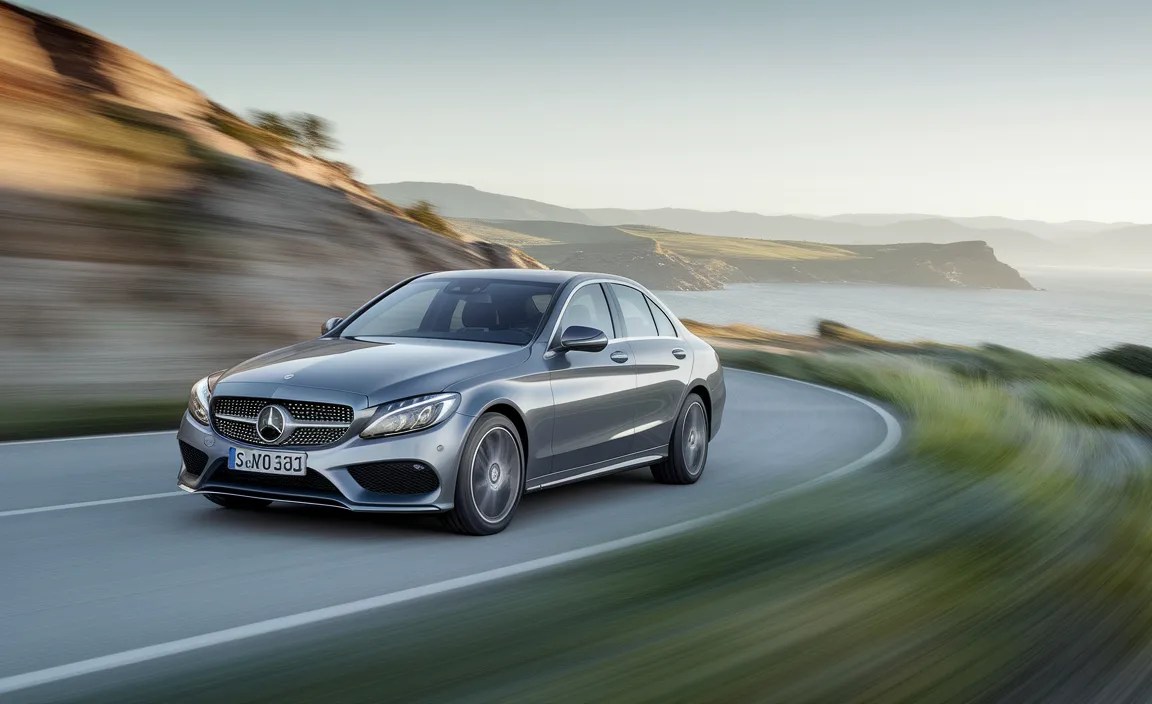
| Feature | Standard Cruise Control | Adaptive Cruise Control (ACC) |
|---|---|---|
| Speed Maintenance | Maintains a set speed only. | Maintains a set speed OR a set distance from the vehicle ahead. |
| Traffic Awareness | None. Relies entirely on driver input. | Monitors vehicle ahead via sensors. |
| Automatic Speed Adjustment | No. Manual intervention required. | Yes. Automatically adjusts speed to match traffic flow. |
| Braking Function | None. | May apply brakes to maintain distance and avoid collisions. |
| Primary Use Case | Open roads with consistent traffic. | Highways, moderate traffic, varying speeds. |
This comparison clearly illustrates the advanced capabilities ACC brings to your driving experience.
Activating and Using C Class Adaptive Cruise
Mastering Adaptive Cruise Control in your C-Class is straightforward once you understand the controls. Located on the steering wheel, the ACC controls are designed for intuitive access, allowing you to manage the system without taking your eyes off the road for long.
Locating the Controls
Your C-Class steering wheel will have a dedicated stalk or set of buttons for cruise control functions. Typically, you’ll find:
- On/Off Button: To engage or disengage the entire cruise control system.
- Set Button: To set your desired maximum speed or to confirm a speed adjustment.
- +/- Buttons (or similar): To increase or decrease your set speed incrementally.
- Resume Button: To re-engage cruise control after it has been temporarily cancelled (e.g., by braking).
- Distance Setting Button: To adjust the following distance to the vehicle ahead.
Familiarize yourself with your specific steering wheel layout by consulting your owner’s manual, as minor variations can exist between model years and specific trim levels.
Step-by-Step Guide to Engagement
Here’s how to engage and use your C-Class Adaptive Cruise Control:
- Ensure Driving Conditions are Suitable: ACC is primarily designed for highway driving or roads with predictable traffic flow. Avoid using it in heavy city traffic, on winding roads, or in poor weather conditions where visibility is compromised.
- Activate the System: Press the ‘ON/OFF’ button for the cruise control system. You should see an indicator light or message on your instrument cluster confirming the system is active.
- Set Your Desired Speed: Accelerate to your preferred driving speed. Then, press the ‘SET’ button (often indicated by a ‘SET+’ or a ‘+’ symbol). Your current speed will now be the target speed for the ACC.
- Select Your Following Distance: Press the ‘Distance’ button. Most systems offer several settings, often represented by bars or dots, indicating short, medium, and long distances. Choose the setting that feels most comfortable and appropriate for the current traffic conditions. A general guideline is to select a distance that would allow you ample time to react if the car ahead brakes suddenly.
- Let ACC Take Over: Once engaged and set, your C-Class will maintain the set speed until it detects a slower vehicle ahead. When it does, it will automatically reduce your speed to match that vehicle’s pace and maintain the selected following distance.
- Braking and Deceleration: If the vehicle ahead slows significantly, ACC will decelerate your car. Note that the system’s braking capability has limits; it may not perform emergency stopping. Always be prepared to take manual control by gently applying the brakes or pressing the brake pedal.
- Cancelling ACC: You can cancel ACC in several ways:
- By Braking: Simply pressing the brake pedal will disengage ACC, but ‘Resume’ will still be functional.
- By Clutch: If you operate the clutch, the system will disengage.
- By Button: Pressing the ‘ON/OFF’ button again will fully deactivate the system.
- Resuming ACC: After cancelling with the brake, if you want to return to your previously set speed, press the ‘RESUME’ button. The system will accelerate your car back to that speed, provided the path ahead is clear.
Adjusting Following Distance
The ability to adjust your following distance is one of ACC’s most versatile features. This ensures you can tailor the system’s operation to your comfort level and the prevailing traffic conditions.
To adjust the distance:
- Locate the ‘Distance’ button on your steering wheel.
- Press it repeatedly to cycle through the available settings (e.g., short, medium, long).
- The instrument cluster will visually indicate the selected distance, often with graphic bars representing the time gap.
Consider the following when choosing your distance:
- Short Distance: Best for situations where traffic is moving consistently and you want to minimize speed differences, mimicking a tightly packed convoy.
- Medium Distance: A good all-around setting for general highway driving.
- Long Distance: Provides a more conservative gap, giving you more reaction time and often feeling more comfortable in lighter traffic.
Always prioritize safety. A longer distance offers more buffer, especially at higher speeds or in unpredictable conditions. Using ACC responsibly means understanding its limitations and being ready to intervene.
Advanced C Class Adaptive Cruise Features (DISTRONIC PLUS)
Many Mercedes-Benz C-Class models are equipped with DISTRONIC PLUS, an advanced version of Adaptive Cruise Control that offers enhanced functionality. This system goes beyond basic speed and distance maintenance to provide a more comprehensive semi-autonomous driving experience.
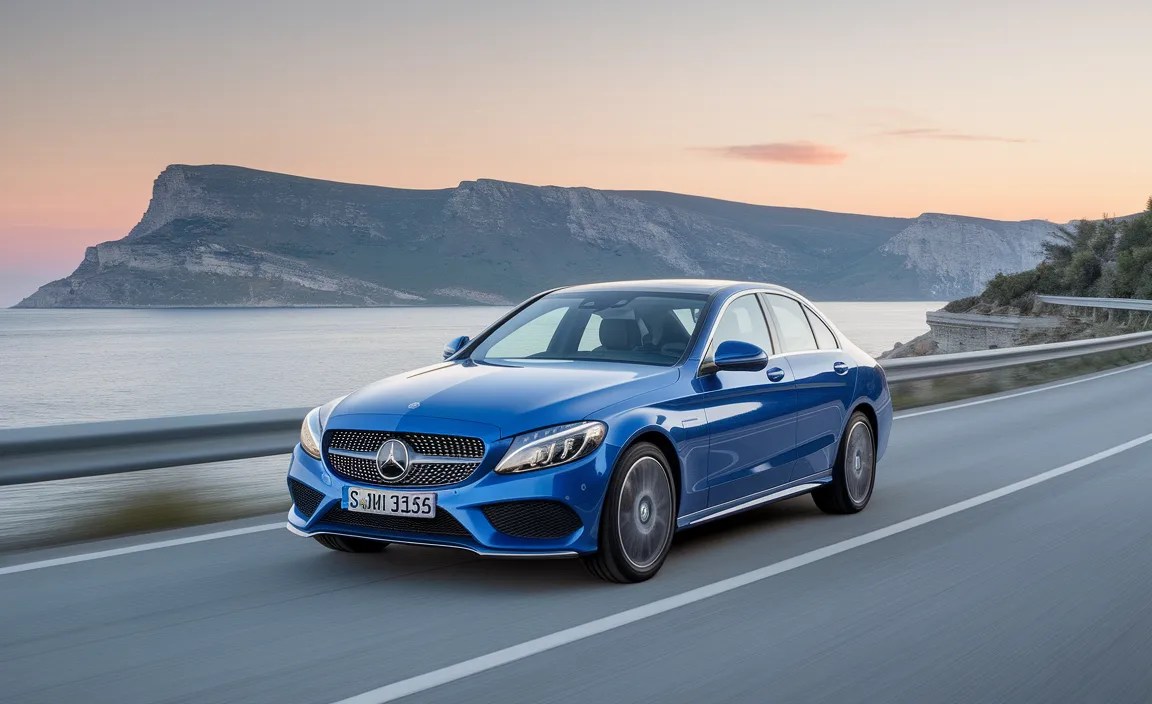
DISTRONIC PLUS with Steering Assist
When your C-Class features the optional DISTRONIC PLUS with Steering Assist, the ACC system becomes even more sophisticated. This integration allows the vehicle not only to control speed and distance but also to help you stay centered in your lane.
How it works:
- Lane Keeping: Utilizing cameras, Steering Assist monitors lane markings.
- Gentle Steering Input: If the system detects that your C-Class is drifting out of its lane, it can apply gentle steering corrections to guide the vehicle back to the center.
- Combined Functionality: When DISTRONIC PLUS is active and Steering Assist detects clear lane markings, it will actively assist in keeping the car within the lane. This is particularly helpful on long, monotonous highway stretches, significantly reducing driver fatigue.
It’s important to remember that this is a driver assistance system. You must always keep your hands on the steering wheel and remain attentive to the road, ready to take full control at any moment. Mercedes-Benz emphasizes that the driver remains fully responsible for the vehicle’s operation.
Speed Limit Assist Integration
Another intelligent feature often paired with DISTRONIC PLUS is Speed Limit Assist. This system uses cameras to read road signs, including speed limits.
When this feature is active:
- Automatic Speed Adjustment: DISTRONIC PLUS can be set to automatically adjust your maximum set speed to match the detected speed limit. This is an incredible convenience, eliminating the constant need to monitor signs and adjust your cruise control manually.
- Manual Override: You can typically choose whether the system automatically adapts to speed limit signs or simply alerts you to them. You can always override the system and set your own desired speed.
This integration enhances both convenience and ensures you are driving within legal speed limits, a testament to the intelligent engineering within your C-Class.
Limitations and When to Deactivate
While ACC and DISTRONIC PLUS are remarkably capable, they are not infallible. Understanding their limitations is paramount for safe operation.
Situations where you should always deactivate ACC or DISTRONIC PLUS:
- Sharp Curves: The system may struggle to navigate very sharp turns smoothly or safely, especially if lane markings are unclear.
- Heavy Rain, Snow, or Fog: Poor weather can significantly impair sensor performance and visibility, compromising the system’s effectiveness.
- Construction Zones: Temporary lane markings, unclear road edges, and unpredictable traffic patterns can confuse the sensors.
- Complex Interchanges or Merging Traffic: These scenarios often involve rapid changes in road layout and multiple vehicles, which can challenge the system.
- When Towing: If you are towing a trailer, the added weight and different handling characteristics may affect ACC performance.
- When You Need Full Control: If you feel uncomfortable or unsure about the system’s actions, always take manual control.
For detailed information on your specific model’s capabilities and limitations, always refer to your Mercedes-Benz owner’s manual.
Maintaining Your C Class Adaptive Cruise System
Just like any advanced automotive technology, your C-Class Adaptive Cruise Control system benefits from proper care and maintenance to ensure its continued optimal performance. While it’s largely an integrated system, a few simple checks can go a long way.
Sensor Care
The crucial radar and camera sensors are the eyes of your ACC system. Keeping them clear and unobstructed is vital.
Regular checks:
- Cleanliness: Regularly clean the front grille area (where radar sensors are often located) and the windshield around the camera housing. Use a soft, lint-free cloth and a mild automotive glass cleaner.
- Obstructions: Ensure that nothing – such as aftermarket add-ons, excessive dirt, snow, ice, or even certain types of car wash brushes – is blocking the sensors.
- Damage: Inspect the sensors for any visible signs of damage, particularly after a minor collision or impact.
If you notice any issues with the sensors, or if warning lights related to the assistance systems appear on your dashboard, it’s best to have them inspected by a qualified Mercedes-Benz technician.
Software Updates
Modern vehicles rely heavily on software for their advanced features. Mercedes-Benz frequently releases software updates that can enhance or refine the performance of systems like ACC.
Importance of updates:
- Performance Enhancements: Updates can improve the responsiveness, accuracy, and smoothness of the ACC system.
- Bug Fixes: Like any software, there’s always a possibility of minor glitches, which updates can rectify.
- New Features: Occasionally, software updates can unlock new functionalities or improve existing ones.
Keeping your vehicle’s software current is typically handled during routine maintenance appointments at a Mercedes-Benz dealership or an authorized service center. Inquiring about available updates during your service visits can ensure you’re benefiting from the latest optimizations.
When to Seek Professional Service
While ACC is designed to be highly reliable, certain issues may require professional attention.
You should contact a Mercedes-Benz service center if:
- Warning Lights Illuminate: Dashboard warning lights related to ACC or driver assistance systems should not be ignored.
- System Malfunctions: If the system behaves erratically, fails to engage, or exhibits inconsistent performance, it needs to be checked.
- After an Impact: Following any accident, however minor, it’s advisable to have the sensors and associated systems checked for alignment and functionality. Incorrect sensor alignment can severely impact performance.
- Windshield Replacement: If your windshield is replaced, the camera unit for the ACC system often needs to be recalibrated. Ensure your service provider performs this crucial step.
A qualified technician has the specialized diagnostic tools and expertise to accurately identify and resolve any issues with your C-Class’s advanced safety and convenience systems.
FAQ: C Class Adaptive Cruise Control
What is the primary benefit of using Adaptive Cruise Control in my C-Class?
The main benefit is significantly reduced driver fatigue, especially on long journeys or in stop-and-go traffic. It allows the car to automatically manage speed and following distance, making driving much more relaxed.
How do I know if my C-Class has Adaptive Cruise Control?
Look for distinct controls on your steering wheel, typically a button to set the distance (often represented by bars) and symbols related to cruise control engagement. Your vehicle’s window sticker or owner’s manual will also confirm if it’s equipped.
Can Adaptive Cruise Control stop my car completely?
Yes, most modern ACC systems, including those in the C-Class, can bring the car to a complete stop. However, it’s crucial to be aware that the system may not always react instantaneously and you should always be prepared to apply the brakes yourself.
How do I adjust the following distance in my C-Class?
There is usually a dedicated ‘Distance’ button on your steering wheel. Pressing this button will cycle through the available following distance settings, typically represented by visual indicators on your dashboard.




